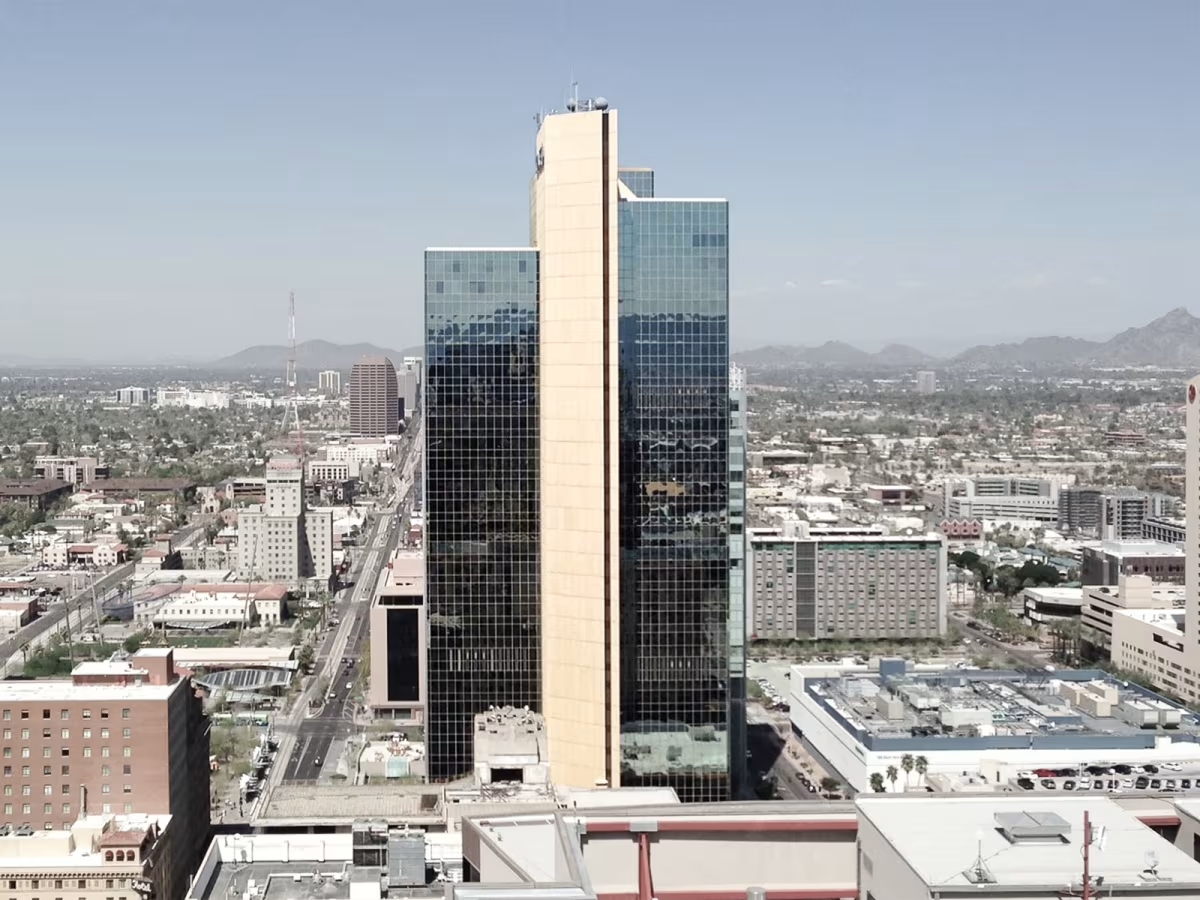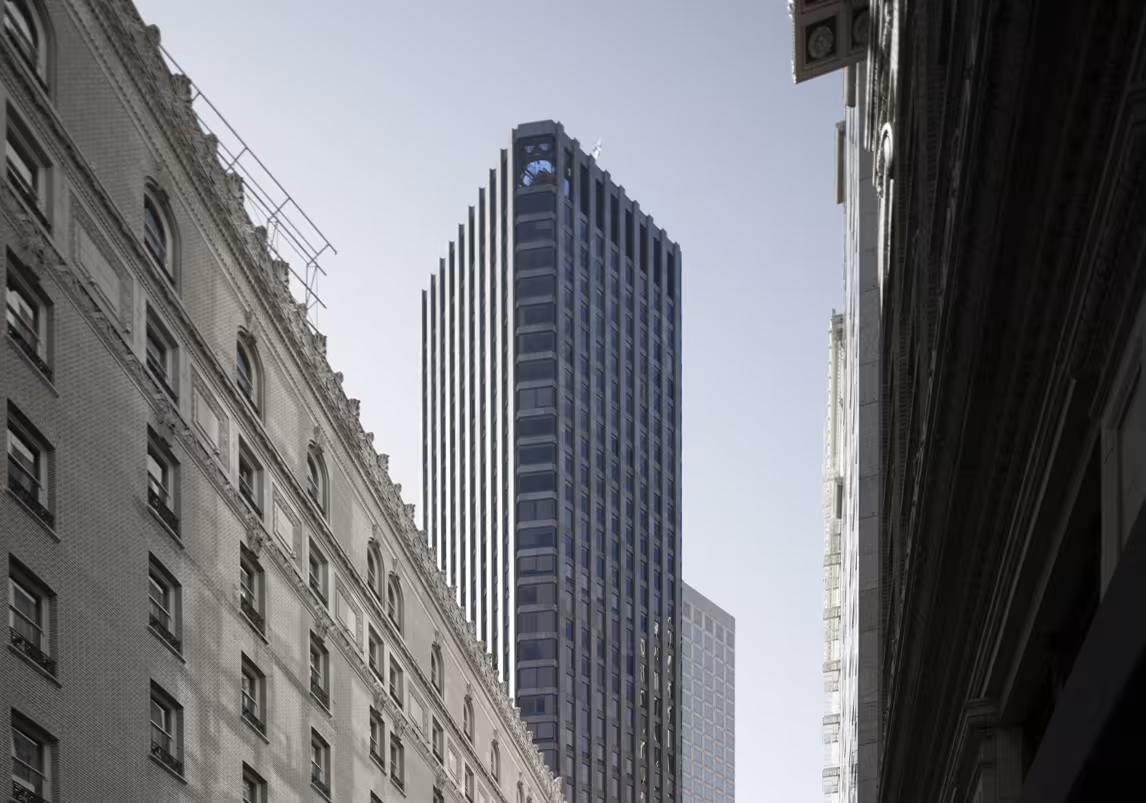Chase Tower vs One Post Street Building


Comparing the Chase Tower and the One Post Street Building is an interesting exercise, because even though they are located in different cities (Phoenix, AZ and San Francisco, CA), both were designed by Welton Becket & Associates and finished within within 3 years of each other. This gives us the chance to see how the same architect's ideas were expressed in different urban contexts almost simultaneously.
Height & Size
These two towers present an interesting contrast in their proportions. The One Post Street Building rises higher at 528ft (161m), while the Chase Tower reaches 482ft (147m). However, the Chase Tower accommodates more floors with 40 levels above ground, compared to 38 floors in the One Post Street Building.
This suggests different approaches to interior space design. The One Post Street Building has an average floor-to-floor height of approximately 4.2m, while the Chase Tower has more compact floors averaging around 3.7m each. The taller building's more generous floor heights might indicate grander interior spaces, higher ceilings, or different programmatic requirements.
These different proportions likely reflect the specific needs each building was designed to serve, whether driven by zoning regulations, client requirements, or the intended use of the spaces within. The contrast shows how architects can achieve different spatial experiences even when working with similar overall building scales.
Architectural Style
The Chase Tower was designed in the Modern style, while the One Post Street Building reflects the principles of Postmodernism.
The One Post Street Building marked the rise of the Postmodernism, while the Chase Tower represented one of the last echoes of the Modern. Together, they frame a moment of transition, when an older movement was fading and a new one was just beginning to take shape. The 3-year gap between their completions makes the overlap between decline and emergence even more apparent.Uses
Both the Chase Tower and the One Post Street Building were designed to serve as commercial towers, and that has remained their main use since their completion, serving similar roles in the urban fabric.
Structure & Facade
The two towers rely on different structural systems, reflecting distinct engineering strategies.
The Chase Tower uses a Frame structural system, which relies on a regular grid of columns and beams to sustain its weight, while the One Post Street Building uses a Framed Tube In Tube system, that combines a strong central core with a perimeter tube of columns.
Yet, when it comes to their facade, they both employed the same solution, a Curtain Wall facade.
A curtain wall is a non-load-bearing facade hung from the structural frame. It is anchored to floor slabs and transfers only its own weight and wind loads, allowing for sleek, glassy exteriors.
| Chase Tower | One Post Street Building | |
|---|---|---|
| Welton Becket & Associates | Architect | Welton Becket & Associates |
| 1972 | Year Completed | 1969 |
| Modern | Architectural Style | Postmodernism |
| Commercial | Current Use | Commercial |
| 40 | Floors Above Ground | 38 |
| 147 m | Height (m) | 161 m |
| 62074 | Built-up Area (m²) | 39393.67 |
| Frame | Structure Type | Framed Tube In Tube |
| Steel | Vertical Structure Material | Steel |
| Steel And Concrete | Horizontal Structure Material | Concrete |
| No | Facade Structural? | Yes |
| Concrete, Glass | Main Facade Material | Granite, Glass |
| Henry C. Beck Company | Main Contractor | Dinwiddie Construction |
| AZ | State | CA |
| Phoenix | City | San Francisco |
| 201 North Central Avenue | Address | 1 Post Street |